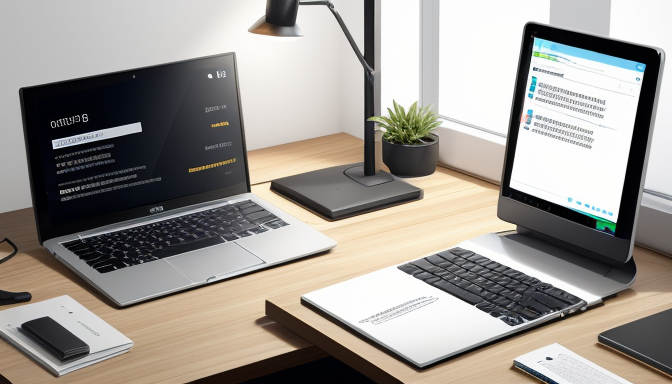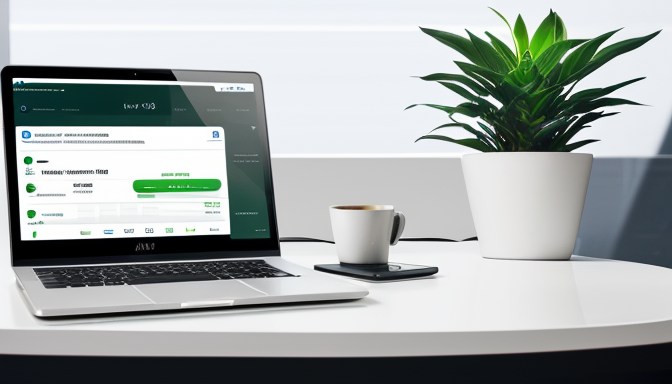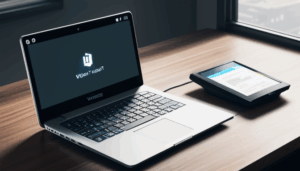Setting up a cryptocurrency wallet securely is crucial to protect your digital assets from theft and unauthorized access. Think of your crypto wallet as a safe where you store your valuables; if the safe isn’t secure, anyone can break in! The first step is to choose the right type of wallet that aligns with your needs. Are you looking for convenience or maximum security? Hardware wallets, for instance, are like having a vault in your home; highly secure but a bit less convenient for quick transactions.
Once you’ve selected your wallet, strong passwords are your first line of defense. Create a password that is complex and unique, making it hard for hackers to guess. Additionally, enabling two-factor authentication adds an extra layer of protection, similar to having a double lock on your safe. Regularly backing up your wallet is also essential; think of it as keeping a spare key in a safe place. By following these steps, you can significantly enhance the security of your crypto wallet and enjoy peace of mind in your cryptocurrency journey.
Understanding Crypto Wallets
Have you ever wondered what a crypto wallet really is? Think of it as your digital bank account, but instead of holding cash, it stores cryptocurrency. These wallets come in various forms, each serving a unique purpose in the vast cryptocurrency ecosystem. At their core, crypto wallets allow you to send, receive, and store digital assets securely. They can be broadly categorized into two main types: hot wallets and cold wallets.
Hot wallets are connected to the internet, making them convenient for everyday transactions. However, this connectivity also exposes them to potential security threats. On the other hand, cold wallets are offline storage solutions, providing an additional layer of security against hacks. To give you a clearer picture, here’s a quick comparison:
| Type | Security Level | Convenience |
|---|---|---|
| Hot Wallets | Low | High |
| Cold Wallets | High | Low |
Understanding these differences is crucial for choosing the right wallet for your needs. Whether you’re a casual trader or a serious investor, knowing how these wallets function will help you protect your assets effectively. So, are you ready to dive deeper into the world of crypto wallets?

Choosing the Right Wallet
When diving into the world of cryptocurrency, selecting the right wallet is crucial. Think of your wallet as a digital safe; you wouldn’t just pick any old box, right? There are various types of wallets, each with its unique features and security levels. The main categories include hardware wallets, software wallets, and paper wallets. Each option serves a different purpose depending on your needs and how you plan to use your digital assets.
Hardware wallets are like the Fort Knox of crypto storage. They keep your private keys offline, making them less vulnerable to hacks. On the other hand, software wallets offer convenience for daily transactions but come with higher risks since they are connected to the internet. Lastly, paper wallets are a more traditional approach, allowing you to print your keys and store them physically, but they can be easily damaged or lost.
To choose the right wallet, consider your security needs, transaction frequency, and how comfortable you are with technology. Do you plan to hold your crypto long-term or trade frequently? Are you tech-savvy or prefer something user-friendly? Answering these questions will guide you to the wallet that best fits your lifestyle.
Hardware Wallets
When it comes to securing your cryptocurrency, stand out as one of the most reliable options. These physical devices store your private keys offline, making them less susceptible to online threats like hacking and malware. Think of a hardware wallet as a bank vault for your digital assets it’s a fortress that keeps your valuables safe from prying eyes.
Unlike software wallets that operate on your computer or smartphone, hardware wallets are dedicated devices that provide an extra layer of security. They can connect to your devices via USB or Bluetooth, allowing you to manage your crypto while keeping your keys hidden away. This is crucial because, as we all know, the digital world can be a dangerous place. By keeping your private keys offline, you significantly reduce the risk of unauthorized access.
However, it’s essential to choose a reputable brand when selecting a hardware wallet. Popular options include:
- Ledger Nano S
- Trezor Model One
- KeepKey
Each of these wallets offers unique features, so do your research to find the one that fits your needs best. Remember, just like you wouldn’t leave your front door wide open, don’t underestimate the importance of securing your crypto with a hardware wallet!
Setting Up a Hardware Wallet
Setting up a hardware wallet is a crucial step in safeguarding your cryptocurrency investments. Think of it as locking your valuables in a safe rather than leaving them in a drawer. To start, unbox your hardware wallet and connect it to your computer or mobile device using the provided USB cable. This initial setup usually involves downloading the wallet’s companion app, which serves as your gateway to managing your crypto assets.
During the setup process, you’ll be prompted to create a secure PIN. This is your first line of defense, so make it complex yet memorable. Next, the wallet will generate a recovery seed a series of words that are your backup in case you lose access. Write this down on paper and store it in a safe place; never share it with anyone, as it grants access to your funds.
After configuring your PIN and noting the recovery seed, take a moment to explore the wallet’s settings. Enable any available security features, such as two-factor authentication, to add an extra layer of protection. Regularly check for firmware updates through the wallet app to ensure you have the latest security patches. By following these steps, you’ll create a robust fortress around your digital assets, making unauthorized access nearly impossible.
Maintaining Your Hardware Wallet
Maintaining your hardware wallet is crucial to ensuring the security of your cryptocurrency assets. Just like you wouldn’t leave your front door unlocked, you need to take proactive steps to protect your digital valuables. First and foremost, keep your wallet’s firmware updated. Manufacturers often release updates that patch security vulnerabilities, so regularly checking for updates is a smart move.
Additionally, storing your hardware wallet in a safe, dry place is vital. Think of it as safeguarding a treasure chest; you wouldn’t leave it out in the open! Consider using a fireproof safe or a secure drawer to prevent physical theft or damage. Furthermore, always create a backup of your wallet’s recovery phrase and store it separately from the wallet itself. This way, if you misplace your device, you can still access your funds.
Lastly, be cautious with the devices you connect your hardware wallet to. Avoid using public computers or unsecured networks, as they can expose your wallet to malware. By following these best practices, you can maintain a secure environment for your hardware wallet and keep your investments safe from potential threats.
Software Wallets
When it comes to managing your cryptocurrency, offer a blend of convenience and functionality that can be hard to beat. These wallets are applications or software programs that allow you to store, send, and receive digital currencies directly from your computer or mobile device. Imagine having a digital vault right at your fingertips, making transactions as easy as sending an email!
However, with great convenience comes certain security risks. Software wallets can be vulnerable to hacking, malware, and phishing attacks, especially if you’re not careful. It’s like leaving your front door unlocked; while it’s easy to come and go, it also invites unwanted guests. To mitigate these risks, it’s crucial to choose a reputable wallet and follow best practices.
Here are a few key points to consider when using software wallets:
- Regular Updates: Always keep your wallet software up to date to protect against vulnerabilities.
- Secure Internet Connection: Use a trusted network, avoiding public Wi-Fi when making transactions.
- Backup Your Wallet: Regularly back up your wallet data to prevent loss of access.
In summary, while software wallets are incredibly user-friendly and perfect for day-to-day transactions, it’s essential to remain vigilant. By implementing strong security measures, you can enjoy the benefits of these wallets while keeping your digital assets safe!
Best Security Practices
When it comes to securing your crypto wallet, implementing is crucial. Think of these practices as the armor that shields your valuable digital assets from potential threats. First and foremost, always use strong passwords. A weak password is like leaving your front door wide open for intruders. Aim for a mix of letters, numbers, and symbols. Consider using a password manager to keep track of these complex passwords securely.
Another essential layer of security is two-factor authentication (2FA). This method adds an extra step when logging into your wallet, requiring not just your password but also a code sent to your phone. It’s like needing both a key and a secret code to access a vault. Enabling 2FA significantly reduces the risk of unauthorized access.
Lastly, never underestimate the power of regular backups. Imagine losing access to your funds due to a device failure or a forgotten password. By creating backups, you ensure that you can always recover your wallet. Store these backups in a safe place, away from your primary device, to protect them from theft or damage.
In summary, adopting these security practices will fortify your crypto wallet against threats, giving you peace of mind as you navigate the exciting world of cryptocurrencies.
Using Strong Passwords
When it comes to securing your crypto wallet, is your first line of defense. Think of your password as the key to your digital vault; if it’s weak, it’s like leaving your front door wide open for thieves. A strong password should be a mix of upper and lower case letters, numbers, and special characters. Aim for at least 12 characters to make it tougher for hackers to crack.
But how do you create a password that’s both secure and memorable? Here are a few tips:
- Use a passphrase made up of random words, which is easier to remember but hard to guess.
- Incorporate symbols and numbers in unexpected places, like replacing ‘a’ with ‘@’ or ‘s’ with ‘5’.
- Consider using a password manager to generate and store complex passwords securely.
Lastly, remember to change your passwords regularly and never reuse them across different accounts. By following these best practices, you’ll significantly reduce the risk of unauthorized access to your crypto assets.
Two-Factor Authentication
When it comes to securing your crypto wallet, two-factor authentication (2FA) is like adding a second lock to your front door. It’s a simple yet powerful way to enhance your security. Instead of just relying on your password, 2FA requires a second piece of information, typically a code sent to your mobile device. This means that even if someone manages to steal your password, they won’t be able to access your wallet without that second factor.
Enabling 2FA is usually a straightforward process. Most wallet providers offer it in their security settings. Here’s a quick rundown of how to set it up:
- Go to your wallet’s security settings.
- Look for the option to enable two-factor authentication.
- Follow the prompts to link your mobile device, often via a QR code.
- Enter the verification code sent to your device to complete the setup.
By implementing 2FA, you add a significant layer of protection against unauthorized access. It’s like having a safety net; even if you slip, you still have that extra safeguard in place. Don’t underestimate its importance—many successful hacks occur due to weak security practices. So, take the time to enable this feature and sleep a little easier knowing your digital assets are better protected!

Regular Backups
When it comes to securing your cryptocurrency assets, are your safety net. Imagine your wallet as a treasure chest; without a backup, losing access to it can mean losing your fortune forever! To ensure that you never find yourself in such a precarious situation, it’s crucial to create backups frequently.
Backing up your crypto wallet involves saving your wallet’s private keys and recovery phrases in a secure manner. You can do this in a few ways:
- Paper Backups: Write down your recovery phrase on paper and store it in a safe place, like a safe or a safety deposit box.
- Digital Backups: Use encrypted USB drives to store your wallet data, but be cautious about where you keep them.
- Cloud Backups: While convenient, ensure you use strong encryption and two-factor authentication to protect these files.
Remember, the goal is to have multiple copies in different locations to mitigate risks. Regularly update your backups whenever you make significant changes to your wallet, such as adding new cryptocurrencies or changing your security settings. By doing so, you’re not just safeguarding your assets; you’re also ensuring peace of mind. After all, in the world of crypto, a little foresight can save you from a lot of heartache!
Frequently Asked Questions
- What is a crypto wallet?A crypto wallet is a digital tool that allows you to store, send, and receive cryptocurrencies. Think of it as your online bank account, but for digital assets!
- How do I choose the right wallet?Choosing the right wallet depends on your needs. If security is your priority, consider a hardware wallet. For convenience, a software wallet might be the way to go. It’s all about finding the perfect balance!
- Why is two-factor authentication important?Two-factor authentication adds an extra layer of security by requiring a second form of verification, like a text message code. It’s like having a double lock on your front door—much harder for intruders to bypass!
- How often should I back up my wallet?Regular backups are essential! Aim to back up your wallet every time you make significant changes or transactions. This way, you’ll always have access to your funds, no matter what!

